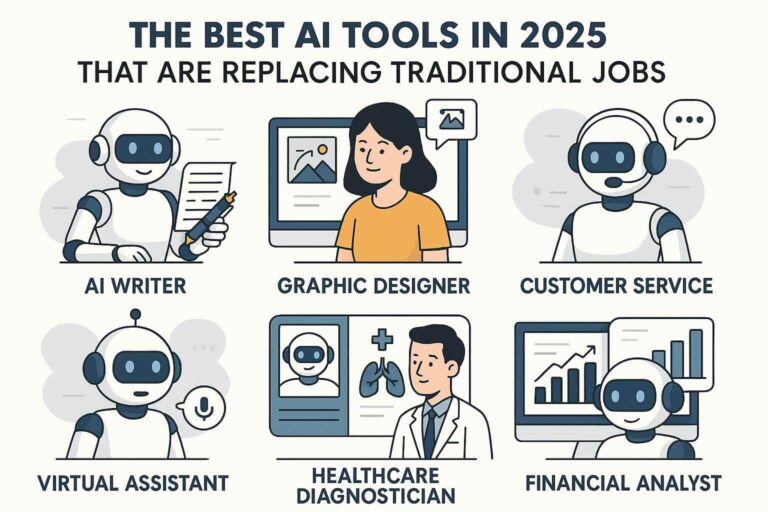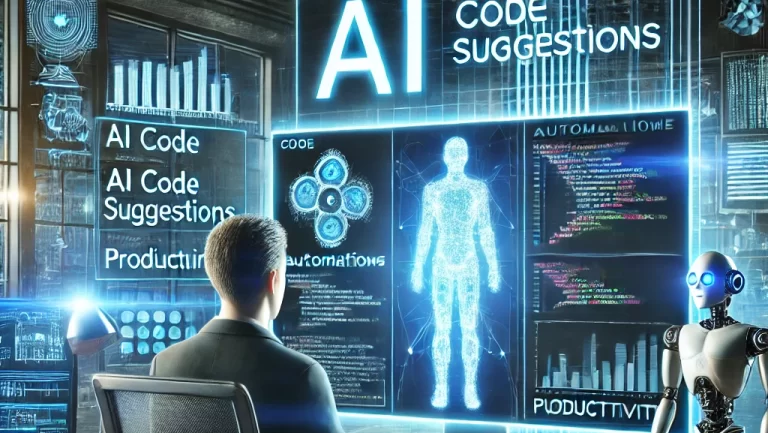As we step into 2025, the rapid pace of technological advancement continues to reshape the way we live, work, and interact. While these innovations bring unprecedented convenience, they also open the door to sophisticated cyber threats that target individuals, businesses, and governments alike. Understanding these risks and proactively addressing them is crucial for safeguarding sensitive information and maintaining trust in our digital ecosystem. Here, we explore the top cyber threats expected to dominate headlines in 2025 and how you can stay ahead of the curve.
1. AI-Powered Cyberattacks
Artificial intelligence (AI) has revolutionized industries, but it has also empowered cybercriminals with tools to launch more sophisticated attacks. In 2025, we expect AI to be used for:
- Advanced Phishing Campaigns: AI can generate highly personalized phishing emails that are nearly indistinguishable from legitimate communications. By analyzing publicly available data, cybercriminals can craft messages that exploit human trust.
- Deepfake Scams: The use of AI-generated deepfakes for fraud, blackmail, or misinformation will surge. For example, deepfake audio or video could impersonate CEOs to authorize fraudulent transactions.
- Automated Malware: AI-driven malware can adapt and evolve to evade detection by traditional security systems, making it harder to neutralize threats in real-time.
Prevention Tip: Businesses and individuals must invest in AI-powered cybersecurity solutions that can detect and counteract AI-based threats. Education on identifying phishing attempts and verifying the authenticity of communications is also critical.
2. Ransomware Evolution
Ransomware attacks will continue to grow in frequency and sophistication in 2025. Threat actors are expected to:
- Adopt Double and Triple Extortion Tactics: Beyond encrypting data, attackers will exfiltrate sensitive information and threaten to release it unless a ransom is paid. In triple extortion, they may also target customers or partners.
- Target Critical Infrastructure: Hospitals, power grids, and transportation systems remain vulnerable due to outdated security measures and the catastrophic impact of downtime.
- Ransomware-as-a-Service (RaaS): RaaS platforms will enable less-skilled cybercriminals to execute attacks by providing them with ready-made ransomware kits.
Prevention Tip: Regularly update and patch software, implement robust backup systems, and conduct frequent cybersecurity training. Using zero-trust architectures can also minimize the impact of breaches.
3. IoT Vulnerabilities
The Internet of Things (IoT) ecosystem continues to expand, with billions of connected devices now integral to daily life. However, many IoT devices lack adequate security measures, making them prime targets for:
- Botnet Creation: Cybercriminals can hijack IoT devices to form botnets capable of launching large-scale Distributed Denial of Service (DDoS) attacks.
- Smart Home Exploits: Vulnerabilities in smart home devices, such as security cameras and voice assistants, can expose personal information or allow unauthorized access.
- Critical System Disruption: IoT devices in healthcare and industrial settings are particularly vulnerable, as breaches can compromise patient safety or disrupt manufacturing processes.
Prevention Tip: Ensure IoT devices are updated with the latest firmware, change default passwords, and segment IoT networks from critical systems.
4. Supply Chain Attacks
In 2025, supply chain attacks will pose a significant threat as organizations increasingly rely on third-party vendors. Cybercriminals exploit these relationships to:
- Infiltrate Trusted Partners: Attackers can compromise a vendor’s software or hardware to gain access to multiple organizations downstream.
- Introduce Malicious Code: Injecting malicious code into widely-used software updates can spread malware across thousands of systems before detection.
Prevention Tip: Conduct rigorous security assessments of vendors, implement multi-layered security controls, and monitor supply chain activity for unusual behavior.
5. Quantum Computing Risks
While quantum computing holds promise for solving complex problems, it also threatens existing encryption standards. By 2025, quantum computers may have the potential to:
- Break Cryptographic Algorithms: Public key encryption, which secures most online communications, could be rendered obsolete.
- Enable Advanced Threats: Cybercriminals with access to quantum technology could decrypt sensitive data or compromise digital signatures.
Prevention Tip: Transition to quantum-resistant encryption algorithms and stay informed about developments in quantum cryptography.
6. Insider Threats
Insider threats—whether malicious or accidental—remain a persistent challenge. In 2025, we anticipate:
- Data Leaks: Disgruntled employees or those unaware of security protocols may inadvertently expose sensitive information.
- Credential Theft: Poor password hygiene and the reuse of credentials increase the risk of insider accounts being compromised.
Prevention Tip: Implement role-based access controls, monitor user behavior for anomalies, and foster a culture of cybersecurity awareness within organizations.
7. Social Engineering 2.0
Social engineering attacks are evolving beyond simple phishing schemes. Cybercriminals now leverage:
- Multi-Channel Deception: Combining phone calls, emails, and social media interactions to build trust and manipulate targets.
- Psychological Manipulation: Using AI to analyze behavioral patterns and craft highly persuasive attacks.
Prevention Tip: Train employees to recognize social engineering tactics and establish clear protocols for verifying requests involving sensitive information.
8. Cloud Security Breaches
With the increasing reliance on cloud computing, attackers are targeting vulnerabilities in cloud environments. Key threats include:
- Misconfigured Cloud Services: Poorly configured storage buckets or permissions can expose sensitive data.
- Credential Compromise: Weak authentication mechanisms make it easier for attackers to access cloud accounts.
Prevention Tip: Implement multi-factor authentication (MFA), conduct regular audits of cloud configurations, and use encryption to protect data at rest and in transit.
9. Cryptocurrency-Related Attacks
As cryptocurrencies gain mainstream adoption, they become attractive targets for cybercriminals. In 2025, we expect:
- Wallet Hacks: Exploiting vulnerabilities in digital wallets to steal funds.
- Cryptojacking: Unauthorized use of devices to mine cryptocurrencies, leading to reduced performance and increased energy costs.
- DeFi Exploits: Decentralized finance (DeFi) platforms are at risk of code vulnerabilities that enable attackers to drain funds.
Prevention Tip: Use hardware wallets for cryptocurrency storage, audit smart contracts, and monitor blockchain transactions for suspicious activity.
10. Nation-State Cyber Warfare
Geopolitical tensions will drive an increase in state-sponsored cyberattacks in 2025. These attacks often target:
- Critical Infrastructure: Disrupting essential services such as power grids, water supplies, and healthcare systems.
- Espionage: Stealing sensitive government or corporate data to gain strategic advantages.
- Disinformation Campaigns: Using cyber tools to influence public opinion and destabilize political systems.
Prevention Tip: Governments and organizations must collaborate to enhance threat intelligence sharing and develop coordinated responses to cyber incidents.
11. Zero-Day Exploits
Zero-day vulnerabilities, which are unknown to software vendors, remain a lucrative avenue for cybercriminals. Exploits can:
- Target Popular Software: Attacks on widely-used applications can affect millions of users.
- Enable Advanced Persistent Threats (APTs): These stealthy attacks allow adversaries to remain undetected for extended periods.
Prevention Tip: Apply patches and updates as soon as they are available, and use threat detection tools to identify unusual activity.
12. Biometric Data Theft
Biometric authentication, such as fingerprint and facial recognition, is becoming more common. However, the theft of biometric data poses significant risks, as it cannot be changed like passwords.
- Identity Theft: Stolen biometric data can be used to impersonate individuals.
- Access Breaches: Compromised biometric systems can grant unauthorized access to secure facilities or devices.
Prevention Tip: Use multi-factor authentication that combines biometrics with additional layers of security, such as passwords or hardware tokens.
13. Cybersecurity Skills Gap
The shortage of skilled cybersecurity professionals will exacerbate vulnerabilities in 2025. This gap leaves organizations ill-equipped to:
- Detect and Respond to Threats: Delayed responses can magnify the impact of breaches.
- Implement Security Best Practices: Lack of expertise can result in misconfigurations and weak defenses.
Prevention Tip: Invest in cybersecurity training programs and leverage automated security tools to augment human efforts.
Final Thoughts: How Can We Stay Safe in 2025?
The cyber threat landscape in 2025 will be more complex than ever. Proactively addressing these challenges requires a multi-faceted approach that combines advanced technologies, rigorous training, and a commitment to staying informed.
We want to hear from you: What measures are you taking to protect yourself and your organization from cyber threats? Share your thoughts in the comments, and don’t forget to share this article with your network to spread awareness. Together, we can build a safer digital future.












